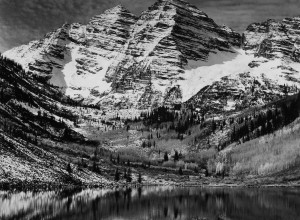Comics Extra
If you enjoyed our December feature on comic book collecting ("Super Prices for Superheroes" by Jonathan Shipley), here's some neat background he wrote about the origins of collectible comic books.
You might also like Ian McKay's auction report on Batman v. Superman at auction, or Jonathan Shipley's blog on Batman from earlier this year.
The greatest hero the world has ever known was born in Cleveland. "I hop out of bed," remembered Jerry Siegel. It was 1934. "I hop out of bed and write this down, and then I go back and think some more for about two hours and get up again and write that down. This goes on all night at two hour intervals." The sun came up. He ran over to his pal's house, Joe Shuster. They had been friends since their teen years at Glenville High School. Jerry shows Joe his writings. "We just sat down," Shuster later said, "and I worked straight through." Thus began the life of Superman.??
It took years for the two men to find a publisher for their comic strip hero, but they did. In 1938, the editor of National Allied Publications, Vin Sullivan, chose Superman as the cover feature for National's Action Comics #1. It sold for a dime. Fast forward to 2010. Siegel is now dead (he passed away in 1996 in Los Angeles). Shuster is, too (the penciler died in 1992 at the age of 78). Arguably the most famous fictional character ever created, Superman heads to the auction blocks. Action Comics #1 sells for, in March 2010, $1.5 million, making it the most expensive and valuable comic book of all-time.
????In early 1939, the comic book industry was abuzz with Superman and his success at selling comic books. Editors were eager to find the next superhero that would make it big. Again came Vin Sullivan. The editor of National Allied Publications, the future DC Comics, approached Bob Kane on a Friday. He asked Kane to come up with something. Kane agreed to have something back to the editor on Monday. Inspired by Douglas Fairbanks, Jr.'s role as Zorro, Da Vinci's drawings of his omithopter, and an unheralded 1930 film, The Bat Whispers, he came up with a red-dressed hero with mechanical wings. Bird-Man. Kane showed his friend and fellow comic book cohort, Bill Finger. They collaborated and toiled throughout the weekend. What if he was darker? More nocturnal? What if he wasn't in red, but in grays and blacks? What if he had a cape and a cowl and no one would be able to see his eyes? What about Bat-Man? They handed their work to Sullivan. Batman first appeared in "The Case of the Chemical Syndicate" in Detective Comics #27 in May, 1939. Batman was a hit. Selling for a dime, Batman received his own solo title in 1940 (his loyal sidekick Robin joined him in April of that year). Fast forward to 2010. In February Detective Comics #27 sold at auction for $1,075,000.
Now it's 1962. The Fantastic Four, the comic book heroes, are extremely popular. Marvel Comics editor and head writer Stan Lee wants to create a character that teenagers can relate to. He wants to combine a powerful hero with deep vulnerabilities. He corrals artist Steve Ditko to come up with something. Lee said once that the hero "would lose out as often as he'd win - in fact, more so." It was unheard of at the time for a superhero not to prevail time and time again. To test his hero out, in the last issue of a science fiction title that was slated for cancellation, Spider-Man appeared. The character quickly became the most influential superhero since Superman. The book, Amazing Fantasy #15, sold at auction recently for $280,000 - the highest auction price at the time for a comic book created in the 1960s. -- Jonathan Shipley
You might also like Ian McKay's auction report on Batman v. Superman at auction, or Jonathan Shipley's blog on Batman from earlier this year.














